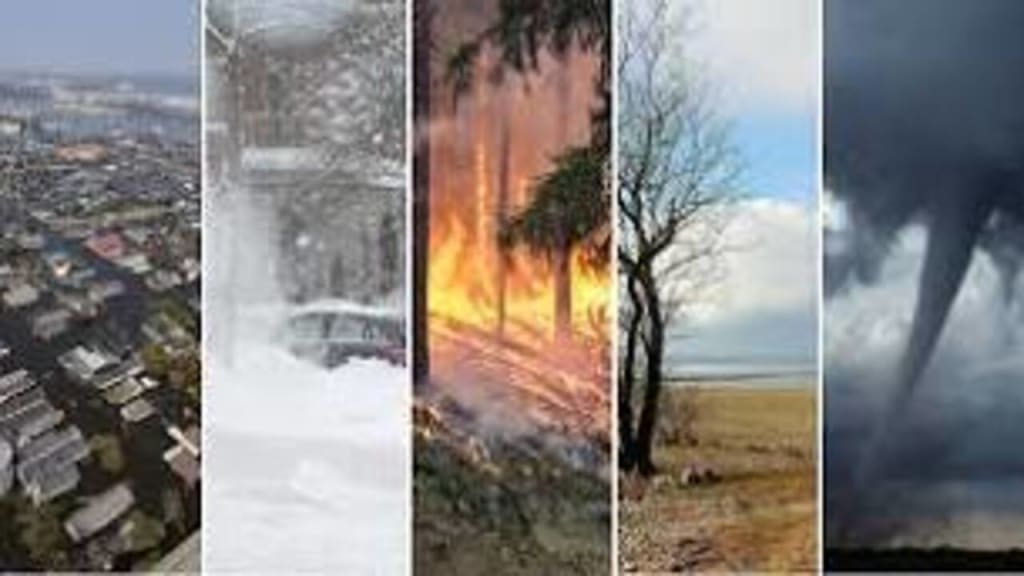Overcoming Adversity
Navigating Disasters and Building Resilient Communities

Disasters, both natural and human-made, have the potential to wreak havoc on communities and individuals, leaving behind a trail of destruction and despair. From earthquakes and floods to fires and pandemics, these events test our resilience and challenge us to come together in the face of adversity. In this article, we will explore the impact of disasters, the challenges they present, and strategies for navigating and recovering from these catastrophic events.
The Impact of Disasters
Disasters can have far-reaching consequences, affecting every aspect of individuals' lives and the communities they belong to. The impact of disasters can be summarized as follows:
1. Loss of life and injuries: Disasters often result in the tragic loss of lives and leave many injured or traumatized. The physical and emotional toll on individuals and families affected by these events is profound and long-lasting.
2. Infrastructure damage: Disasters can cause severe damage to critical infrastructure such as buildings, roads, bridges, and utilities. This damage disrupts essential services, including transportation, communication, and access to clean water and electricity.
3. Economic repercussions: Disasters can have a devastating impact on local economies. Businesses may be destroyed, livelihoods disrupted, and job losses occur. The recovery process can be slow and hindered by the economic burden placed on communities.
4. Displacement and homelessness: Many disasters force people to flee their homes, leading to displacement and homelessness. Temporary shelters and emergency response efforts become crucial in providing safety and support to those affected.
Challenges in Navigating Disasters
Navigating and recovering from disasters is a complex process, and several challenges arise during this time:
1. Emergency response and preparedness: Timely and effective emergency response is critical during and immediately after a disaster. However, challenges in communication, coordination, and resource allocation can hinder these efforts, impacting the effectiveness of response measures.
2. Emotional and psychological impact: Disasters take a toll on individuals' mental and emotional well-being. The trauma, grief, and anxiety experienced during and after a disaster can have long-lasting effects on the affected population, requiring adequate mental health support.
3. Rebuilding and recovery: The process of rebuilding and recovering from a disaster is often lengthy and resource-intensive. Communities must secure funding, navigate bureaucratic processes, and develop comprehensive plans for reconstruction and rehabilitation.
4. Vulnerable populations: Disasters disproportionately affect vulnerable populations, including the elderly, children, people with disabilities, and those living in poverty. Ensuring their safety, access to resources, and inclusion in recovery efforts becomes paramount.
Strategies for Navigating and Recovering from Disasters
Despite the challenges, communities can adopt strategies to navigate and recover from disasters, fostering resilience and promoting effective recovery:
1. Emergency preparedness: Investing in robust emergency preparedness measures is crucial. This includes developing disaster response plans, conducting drills, and ensuring the availability of necessary resources, such as emergency supplies and communication systems.
2. Collaborative response and coordination: Effective disaster response requires collaboration among government agencies, non-profit organizations, community groups, and volunteers. Coordinated efforts enhance response capabilities and optimize resource allocation.
3. Community engagement and empowerment: Engaging the affected community in decision-making processes empowers individuals and fosters a sense of ownership in the recovery efforts. Involving community members in planning, resource allocation, and implementation ensures that their needs and perspectives are considered.
4. Mental health support: Recognizing the psychological impact of disasters and providing accessible mental health services is essential. Establishing support systems, counseling services, and community-based initiatives that promote healing and resilience contribute to long-term recovery.
5. Sustainable infrastructure and planning: Incorporating sustainable practices in rebuilding efforts ensures that communities are more resilient to future disasters. Implementing building codes, infrastructure improvements, and land-use planning strategies that consider potential risks can mitigate damage and enhance resilience.
6. Social support networks: Strengthening social support networks within communities fosters a sense of belonging and connection. Establishing community centers, support groups, and mentorship programs builds social resilience and provides a support system during difficult times.
7. Education and awareness: Educating communities about disaster preparedness, risk reduction, and response strategies empowers individuals to take proactive measures to protect themselves and their communities. This includes educating people on evacuation procedures, first-aid techniques, and environmental conservation practices.
8. Economic recovery and diversification: Supporting economic recovery through grants, low-interest loans, and business development programs enables affected communities to rebuild their livelihoods. Diversifying local economies and investing in sustainable industries also enhance long-term resilience.
9. International cooperation: Disasters often require international support and cooperation. Governments, organizations, and individuals across borders can collaborate in sharing resources, expertise, and funding to aid affected communities in their recovery efforts.
Conclusion
Disasters test the resilience of communities and individuals, but with effective strategies and collaborative efforts, recovery is possible. By prioritizing emergency preparedness, fostering community engagement, supporting mental health, promoting sustainable infrastructure, strengthening social support networks, educating communities, facilitating economic recovery, and fostering international cooperation, we can navigate disasters and build more resilient communities. It is through these collective actions that we can emerge stronger, better prepared, and more united in the face of adversity.
About the Creator
imran khalil
In a world where words shape our perceptions, ignite our imaginations, and connect us across time and space, article writers play a crucial role in delivering informative and engaging content. Among these skilled communicators,





Comments
There are no comments for this story
Be the first to respond and start the conversation.